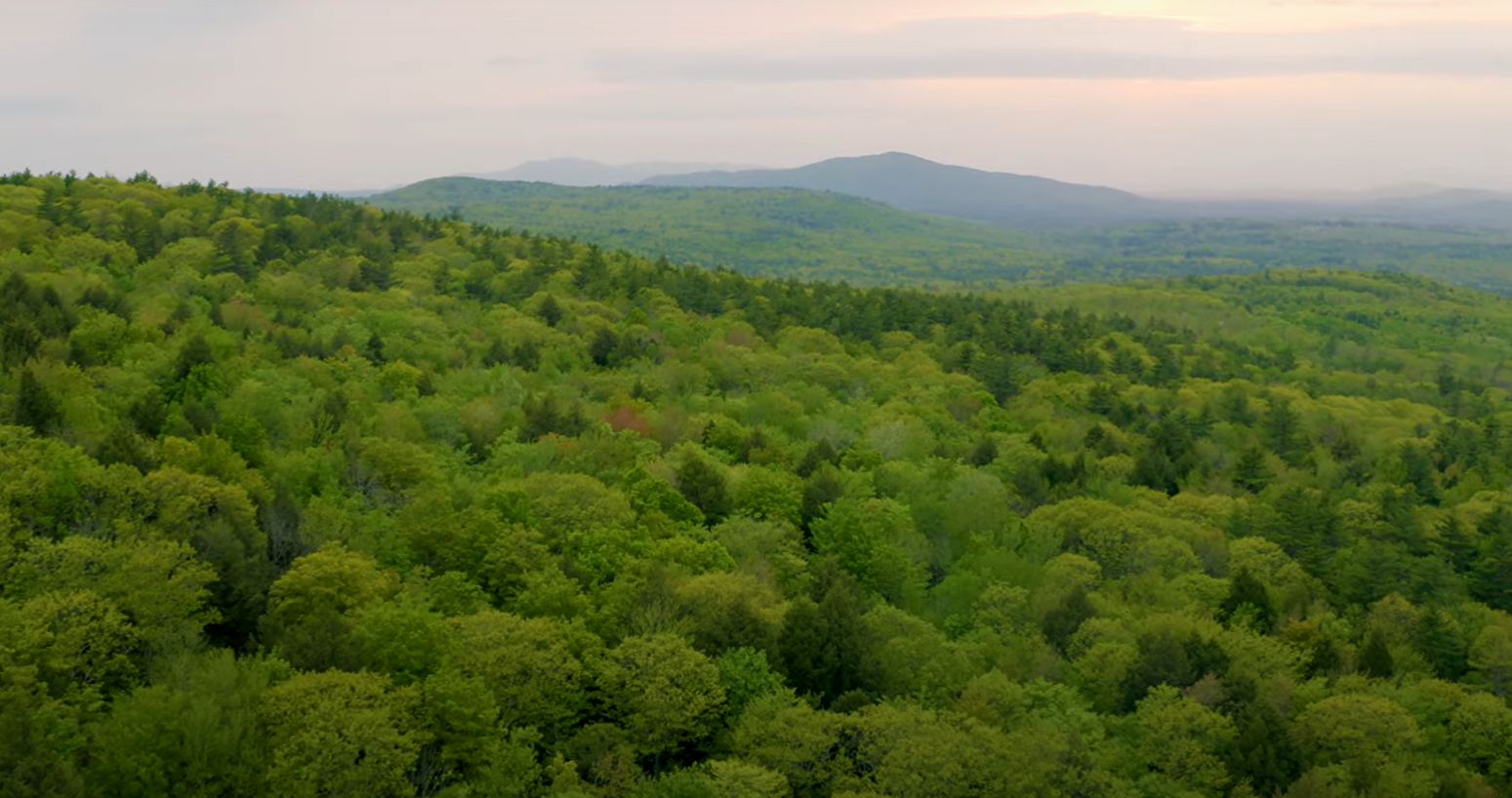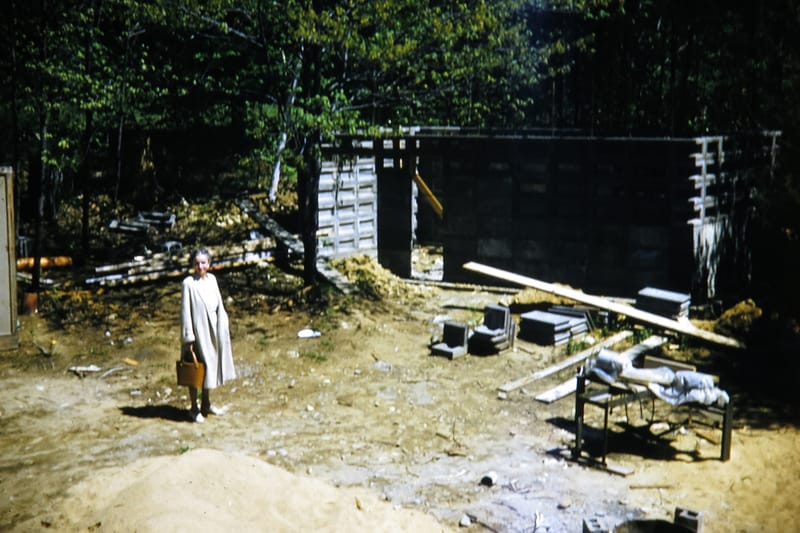New ‘forever wild’ sanctuary is piece of vital New Hampshire-Maine conservation
A newly conserved 553 acres in Maine, near the New Hampshire border, puts another piece in place of a puzzle that comprises 68,000 acres across the two states designated for conservation.


MONTPELIER, VT – A newly conserved 553 acres in Maine, near the New Hampshire border, puts another piece in place of a puzzle that comprises 68,000 acres across the two states designated for conservation.
The Great Oaks Wilderness Sanctuary, in Parsonsfield, Maine, has been permanently protected as forever wild, the Northeast Wilderness Trust announced this week. The designation means the property will have the chance to naturally evolve into an old-growth forest through permanent passive management, the trust said in a news release.
The sanctuary includes some of the only forever-wild land within the Pine River Matrix Forest Block, which is an area of relatively unfragmented forests in Maine and New Hampshire that have been identified as priorities for conservation. The block comprises an area around Effingham that includes Pine River State Forest, High Watch Preserve and Watts Wildlife Sanctuary in New Hampshire, and stretches across the Maine border to include the area surrounding Parsonsfield.
The Wilderness Trust is part of the effort to preserve and create forever wild areas in New England.
Great Oaks Wilderness Sanctuary is open to on-foot, backcountry exploration, but logging, motorized vehicles, mechanized uses, and hunting are prohibited.
The Lougee family donated the land for the sanctuary, with other support coming from a dedicated fund at the Wilderness Trust for the establishment of wilderness sanctuaries and individual donors.
The Lougees were among the three founding families of Parsonsfield, which is on the border with New Hampshire near Effingham, settling the land in 1778. They cleared fields, farmed and planted apple trees, their descendants said.
“Our parents, Arthur and Laura, purchased the Great Oaks property in the late 1940s and added to it in subsequent decades, seeking to conserve Dearborn Mountain,” David Lougee said. “Their intention was to save Dearborn and the surrounding landscapes as a ‘wild’ sanctuary set aside for the study of its unique geology and its rare and threatened species of ferns and flowers, as well as abundant wildlife, while also protecting many springs that drain into West Pond.”
The land stretches from the summit of Dearborn Mountain to the shoreline of West Pond, with a range of ecosystems and is considered a resilient landscape based on The Nature Conservancy Resilient Land Mapping tool. Resiliency is the measurement of a particular landscape’s capacity to maintain species diversity and ecological function as the climate changes, the Wilderness Trust said in the release.
Leavitt Plantation, 8,600 acres of conserved land managed for sustainable forestry, shares a boundary with the new sanctuary. The trust points out that In forever-wild conservation, “landscape context is important, as core wilderness areas have positive spillover effects on surrounding managed lands including being a source area for biodiversity and serving as a baseline for study and comparison.”
The protection of both Wildlands (land left alone to evolve naturally) and managed woodlands are part of a holistic approach to land conservation, according to the trust.
“Wilderness conservation plays a significant and special role in land conservation,” Caitlin Mather, land protection manager, said. “There has been an incredible amount of important conservation work in the surrounding landscape, though so few lands are forever wild.”
She said that the Lougee donation, gives forever wild “a foothold in this forest block.”
The sanctuary has majestic towering oaks, talus slopes (loose rock with little plant cover sitting below cliffs) and red oak-ironwood forests. Its sandy loam soils favor beech, birch, and maple, with red oak and eastern hemlock often making up about a quarter of the canopy’s tapestry, according to the Wilderness Trust.
There is also 1,500 feet of shoreline on West Pond that overhangs with shade trees and provides underwater woody debris, benefiting breeding fish and amphibians, as well as headwater streams of the Saco River. “By protecting this land as forever wild, these headwater streams will contribute to improved water quality for the whole watershed,” the release said.
Because there has been little commercial forestry activity for many decades on the property, fallen trees, standing dead tree trunks, and hollow stumps and logs are prevalent and provide denning, foraging, and nesting habitat for a variety of wildlife, including weasels, songbirds, bears, and coyotes, the Wilderness Trust said.
At least nine rare or threatened understory plant species have been found on the land, including Douglas’s knotweed, Back’s sedge, blunt-lobed woodsia fern, small whorled pogonia, and Fogg’s goosefoot.
Lougee said that his late brother, Jim Lougee, studied and stewarded the land that is now the sanctuary. “The responsibility for continuing this tradition of conservation has fallen to my sister Eleanor and her daughter, Paige, as well as to me and my daughter, Ellen,” Lougee said. “We are all delighted to be able to gift the land to the Northeast Wilderness Trust so that it will be a forever-wild sanctuary.”
Jon Leibowitz, executive director of Northeast Wilderness Trust, said, “Wilderness sanctuaries represent forever-wild conservation in its most distilled form. They are places where natural processes will direct the ebb and flow of life, by intention.
“We are honored to carry on the wild legacy of the Lougee family by safeguarding this extraordinary place, ensuring its continued role as a refuge to wildlife and a haven for people to find wildness that nourishes the soul,” Leibowitz said. “What is more, Great Oaks Wilderness Sanctuary’s old forest will continue storing and sequestering immense amounts of carbon for years to come.”

Vermont preserve added
It has been a busy time for the Wilderness Trust, which announced Thursday that it recently created the Sargent Hill Wilderness Preserve in Hubbardton, Vermont. The 200-acre preserve is near the New York border in the west-central part of the state.
The preserve is part of a landscape that includes thousands of acres of conserved forestland, as well as farms, river valleys and towns, and is between the Adirondacks and the Green Mountains National Forest. It’s in an area that’s a linkage to wildlife movement on a regional scale, the Wilderness Trust said in a news release.
“As the climate changes and development continues, it is imperative to protect intact and connected wildlife corridors, or wildways, so animals have the best chance to thrive long into the future,” the release said.
Leibowitz added, “Vermont stands at an intersection of regional wildlife movement in the Northern Appalachians, a critical juncture gaining heightened significance amidst a changing and unpredictable climate. The Sargent Hill Wilderness Preserve is strategically positioned within one of these vital corridors and its permanent protection as forever-wild benefits both human and non-human communities.”
The Wildness Trust is part of the Wildlands, Woodlands, Farming and Community Initiative to help preserve Wildlands in New England. The initiative’s definition of Wildlands is “tracts permanently protected from development, in which management is explicitly intended to allow natural processes to prevail with ‘free will’ and minimal human interference.”
A report released last year determined that while 81% of New England’s 40 million acres is forested, only 3.3% meets the initiative’s criteria to be Wildlands. The goal is to increase that to 10% by 2060, or even 20%, as land preservation efforts gain steam.
Wildlands “hold immense intrinsic value — wild nature simply has a right to exist, as do all of the species that inhabit wildlands,” the report said. But other critical reasons for preservation is that such land is essential for maintaining and increasing biodiversity, mitigates climate change by storing large quantities of carbon, enhances landscape resilience, offers quiet space for spiritual or physical renewal and serves as reference sites for scientific inquiry and the development of ecological approaches to forest management and conservation.





